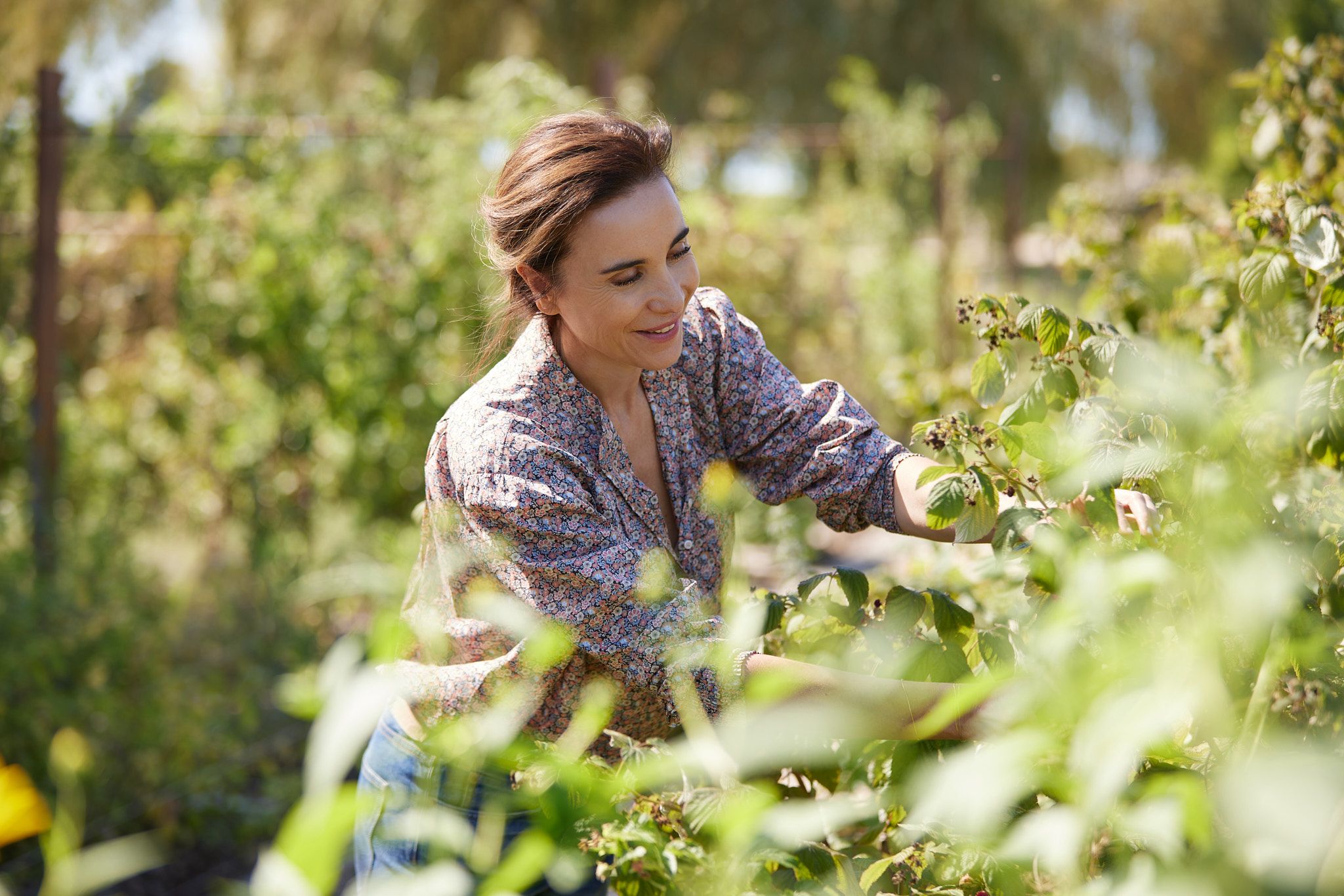
In the quest for more sustainable beauty, the industry is looking beyond traditional ingredients and turning to unexpected sources: waste. By-products from the food industry, once seen as useless, are now being transformed into high-performance skincare ingredients that align with the growing demand for environmentally-conscious products.
“Not so long ago, the gold standard for beauty brands was to deliver a great product,” says Anna Brightman, the co-founder of London-based beauty label UpCircle Beauty. “Now beauty brands must prove that there is a reason for their existence, one that contributes in some way positively to the environment, to society, or to supporting individual expression.”
She’s right. After all, it’s no longer enough for a beauty brand to just claim to be eco-conscious. Brands are expected to make good on their promises. So under the fluff of superfluous labels, what does the future of sustainability really look like? Liah Yoo, the founder of KraveBeauty, says sustainable beauty isn’t as simple as just implementing recyclable packaging. “It’s about rethinking how we source, formulate, and encourage mindful consumption.” KraveBeauty is part of a larger wave of beauty labels who view sustainability as not merely an afterthought but as an integral pillar of their mission.


At the heart of beauty’s sustainability movement lies a fundamental shift: rethinking the very ingredients that go into each product. For instance, KraveBeauty’s new Plumptuous Lip Jelly features 55 per cent upcycled ingredients, including plum oil sourced from discarded French plum kernels.
“Using upcycled ingredients is a key part of our ‘seed to shelf’ approach—ensuring sustainability at every stage of a product’s lifecycle. Rather than constantly extracting new resources, we repurpose by-products from other industries, reducing waste and environmental impact,” Yoo says.

KraveBeauty isn’t alone in this fight. Since its inception in 2016, UpCircle Beauty has also embraced resource-rich upcycled ingredients in its formulas. As a pioneer in sustainable beauty, UpCircle Beauty is one of the few brands that champions planet-friendly resources across its entire skincare range. “Every single product we make contains upcycled ingredients—our perfumes alone have 16 by-product ingredients,” Brightman shares.
The clean beauty brand makes use of over 55 food industry by-products, including blueberry extract, chai spices and chamomile stems. One of their most popular products, the Kaolin Clay Face Mask uses upcycled, organic olive pits obtained from Andalucía, Spain, one of the world’s top exporters of olive oil.

For Brightman and her co-founder and brother William Brightman, the idea of creating a sustainable beauty brand was one born out of necessity. “It all started when we discovered that more than 500,000 tonnes of coffee grounds that are consumed each year in the UK alone are sent to landfills,” she reveals. This inspired the Brightmans to seek a solution for the planet while venturing into skincare.

Similarly, for Caudalie co-founder Mathilde Thomas, sustainability wasn’t just a business decision—it was a way of life long before the brand was founded. “It all comes from my education. My parents produce one of the top twenty Bordeaux wines, entirely organically. They hand-pick the grapes, use horse ploughing, and create their own compost,” she explains. This love for nature later became the foundation of Caudalie’s DNA.

Since 1995, the company has found ethical ways to use grape seeds and vines—by-products of the wine industry—in a variety of their signature products. Not only that: the brand has also recently started using rosewood residue for their Premier Cru skincare line. The extraction process of rosewood essential oil—a prized ingredient in the fragrance world—renders a residue rich in healing capabilities. “This ingredient helps to improve skin firmness and reduce the appearance of wrinkles. By upcycling it, we are able to harness its natural properties to enhance the anti-ageing benefits of our Premier Cru products,” Thomas notes.
Despite these efforts, achieving true sustainability in the beauty industry remains a challenge. One major hurdle is the lack of full transparency in production processes, which continues to complicate brands’s sustainability initiatives.
“Usually, manufacturers handle the entire procurement process, relying on their existing relationships with raw material suppliers. However, for us [at KraveBeauty] to truly create impact from the inside out, we need to go beyond the standard supply chain and ensure we know exactly where our ingredients come from and how they’re sourced,” explains Yoo.

UpCircle Beauty is also facing similar challenges, with Brightman noting, “Each ingredient that we upcycle has already had an entire “life” before we intercept it, usually in a completely different industry to our own, with completely different processes. It means we have twice the work to do to trace our ingredients right back to the start.”
This issue with supply chains is a problem that Yoo says can be solved with transparency in communication. “We prioritise clear communication—whether it’s breaking down ingredient sourcing, sharing the impact of our packaging choices, or being honest about where we’re still improving,” Yoo says.
Caudalie is also on the same page, and the skincare brand is publishing its first sustainability report this year. Thomas outlines, “This report will provide detailed insights into our initiatives and progress, ensuring that our customers are well-informed about our commitment to sustainability.” What’s more: Caudalie’s Research and Natural Formulation Laboratory, established in 2019, aims to get ahead of the sustainability game, by researching green active ingredients of the future, to be used in future skincare formulations.
However, a truly sustainable beauty industry calls for more than the efforts of a few select brands—it demands systemic change. While brands like Caudalie, KraveBeauty and UpCircle Beauty are making strides in transparency and responsible sourcing, the road ahead is long and winding. “It’s a more complex and time-intensive process, but it’s one we believe is necessary to push the industry toward more responsible ingredient sourcing,” says Yoo.
This story first appeared in the April 2025 issue of GRAZIA Singapore.
READ MORE
Face Value: Does The Viral Facial Contrast Theory From Tiktok (Really) Work?
15 Minutes With…Olivier Polge, Chanel’s Master Perfumer
Beauty Beyond Borders: Skincare Inspired By Major Cities Around The World
